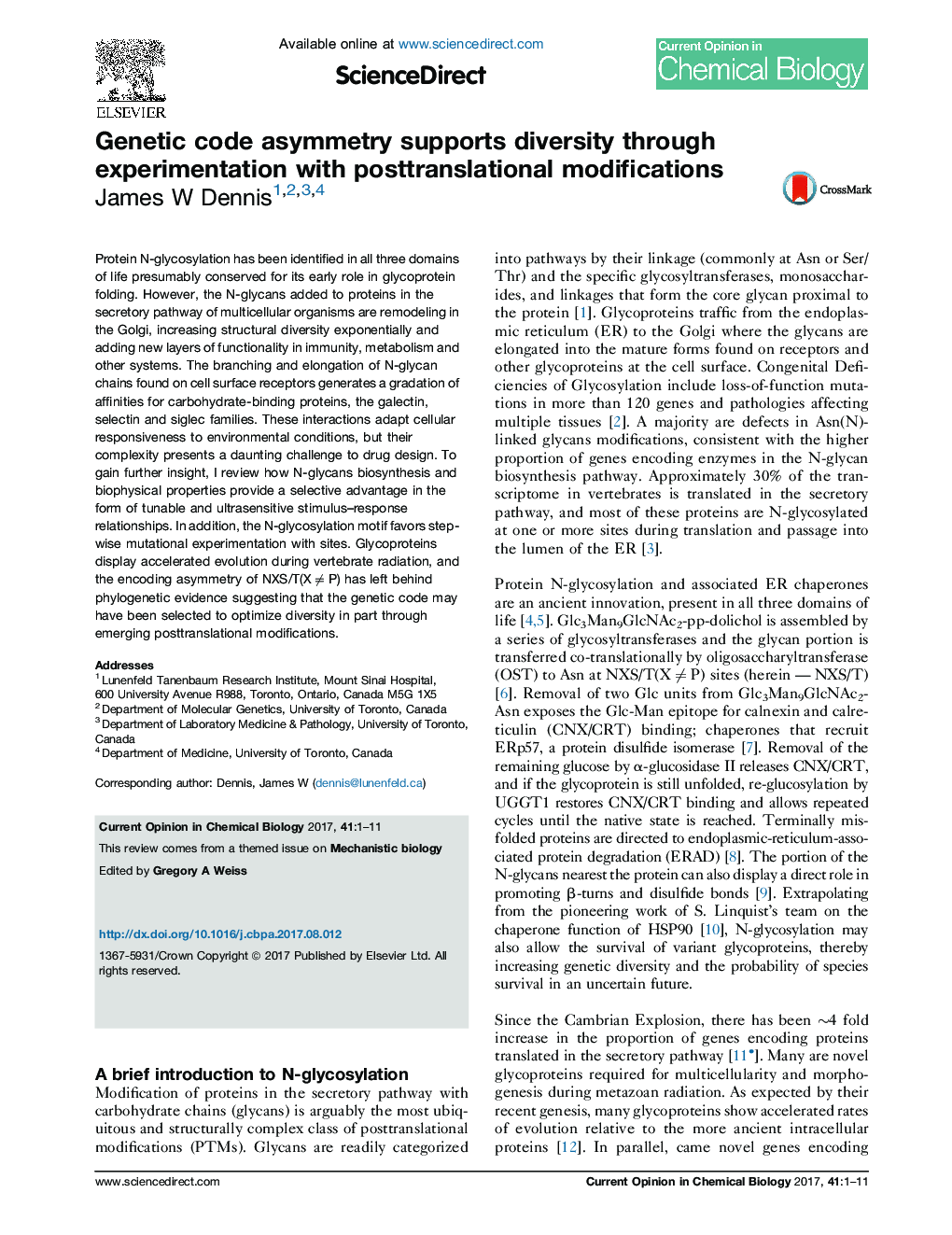| Article ID | Journal | Published Year | Pages | File Type |
|---|---|---|---|---|
| 5143224 | Current Opinion in Chemical Biology | 2017 | 11 Pages |
Abstract
Protein N-glycosylation has been identified in all three domains of life presumably conserved for its early role in glycoprotein folding. However, the N-glycans added to proteins in the secretory pathway of multicellular organisms are remodeling in the Golgi, increasing structural diversity exponentially and adding new layers of functionality in immunity, metabolism and other systems. The branching and elongation of N-glycan chains found on cell surface receptors generates a gradation of affinities for carbohydrate-binding proteins, the galectin, selectin and siglec families. These interactions adapt cellular responsiveness to environmental conditions, but their complexity presents a daunting challenge to drug design. To gain further insight, I review how N-glycans biosynthesis and biophysical properties provide a selective advantage in the form of tunable and ultrasensitive stimulus-response relationships. In addition, the N-glycosylation motif favors step-wise mutational experimentation with sites. Glycoproteins display accelerated evolution during vertebrate radiation, and the encoding asymmetry of NXS/T(XÂ â Â P) has left behind phylogenetic evidence suggesting that the genetic code may have been selected to optimize diversity in part through emerging posttranslational modifications.
Related Topics
Physical Sciences and Engineering
Chemistry
Chemistry (General)
Authors
James W Dennis,
